Affiliate disclosure: This post may contain affiliate links. Please see our Privacy Policy.
Dehydrating mushrooms is one of the simplest ways to preserve them for year-round use right on your pantry shelf.
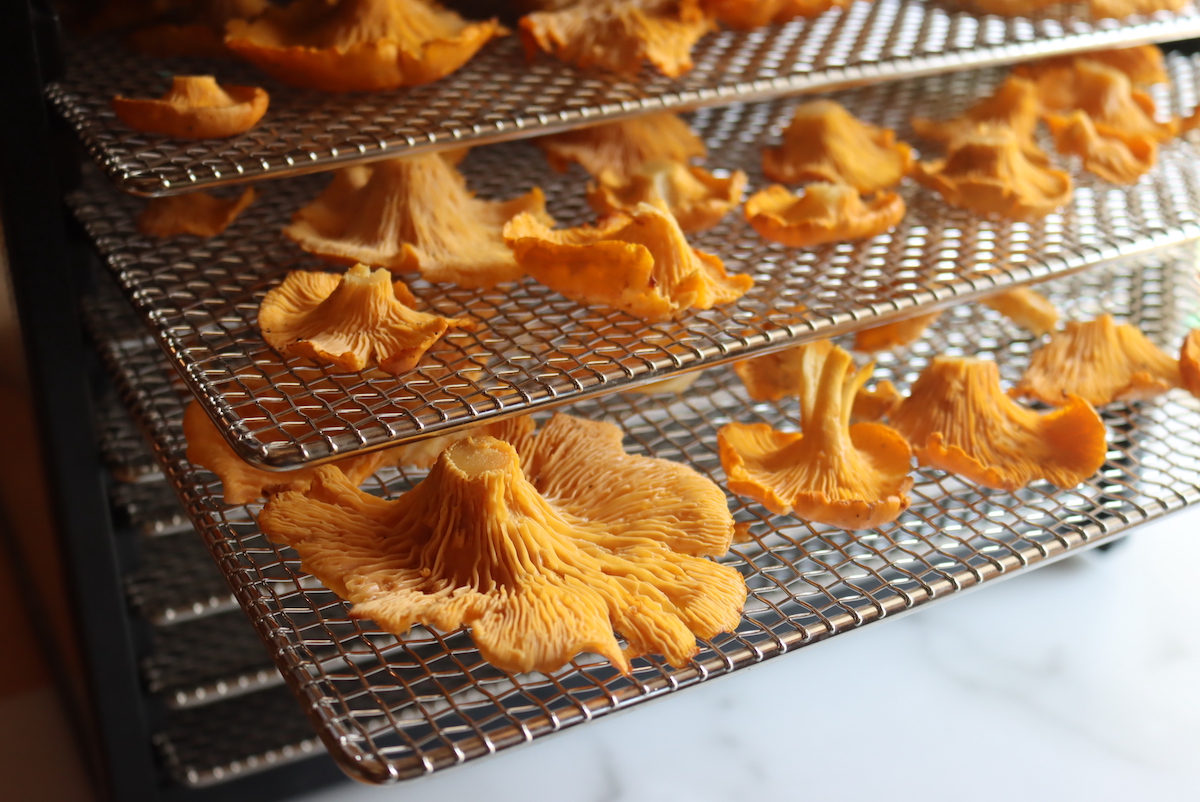
Drying mushrooms is one of the very best ways to preserve mushrooms, regardless of type. Dried mushrooms have a long shelf life, usually maintaining peak quality for around 2 years, but sometimes up to 5 years if kept well sealed in a cool, dark location.
While almost all mushrooms are easy to dehydrate, some require a bit more care and attention.
Best Mushrooms to Dehydrate
The best mushrooms for dehydrating are mushrooms that you’ll end up cooking with water. Anything you’re going to put into a sauce, soup, risotto, pasta or soup works exceptionally well when dehydrated. They’ll rehydrate during cooking (or quickly in a bit of water beforehand) and flavor everything nicely.
Dehydrating is not a good option for mushrooms you intend to fry, as dried mushrooms don’t fry well (even after they’re rehydrated). Chicken of the woods is one good example, since it’s usually fried (like chicken) it doesn’t dehydrate well.
Other mushrooms that are exceptionally large and have big gills don’t tend to dehydrate well. Things like portabella mushrooms, since the deep gills take on an odd texture when dehydrated. While they’re fine dehydrated, but not at their best.
Dehydrating Cultivated Mushrooms
We grow our own mushrooms, mostly shiitake mushrooms, but also wine caps, oysters, and a few others. When they flush, the harvest can be a bit overwhelming, and dehydrating homegrown mushrooms is one of the best ways to preserve them.
Or you know, you could just buy them from the grocery store like a “normal person,” and they often go on sale for just pennies a pound when stores are overstocked. That’s the perfect time to stock up and dehydrate mushrooms.
- Shiitakes
- Crimini
- White Button Mushrooms
- Oyster Mushrooms
- Wine Cap Mushrooms
I do not recommend dehydrating portabellas, at least not whole. They don’t rehydrate well unless chopped into small chunks first.
Crimini mushrooms are actually just “baby” or immature portabellas anyway, so they’re a better choice for dehydrating. They have less developed gills/spores so they result in a better texture after dehydration.

Dehydrating Wild Mushrooms
There are lots of good choices for dehydrating wild mushrooms, and believe it or not, humans aren’t the only ones doing it. Squirrels cache them in tree branches to dehydrate and eat in the winter months.
Most beginner wild mushrooms dehydrate really well.
- Chanterelles
- Morels
- Lion’s Mane
- Lobster Mushrooms
- Pheasant Back Mushrooms
Mushrooms like chicken of the woods don’t dehydrate well, and they’re actually particularly trick to preserve. They’re best consumed fresh in season, which is unfortunate because they tend to come in huge flushes.
If you come upon a huge flush of chicken of the woods, try pickling them instead.
Fragile, short-lived mushrooms like shaggy mane mushrooms also don’t dehydrate well, and they actually start to break down just hours after harvest. They must be used fresh.
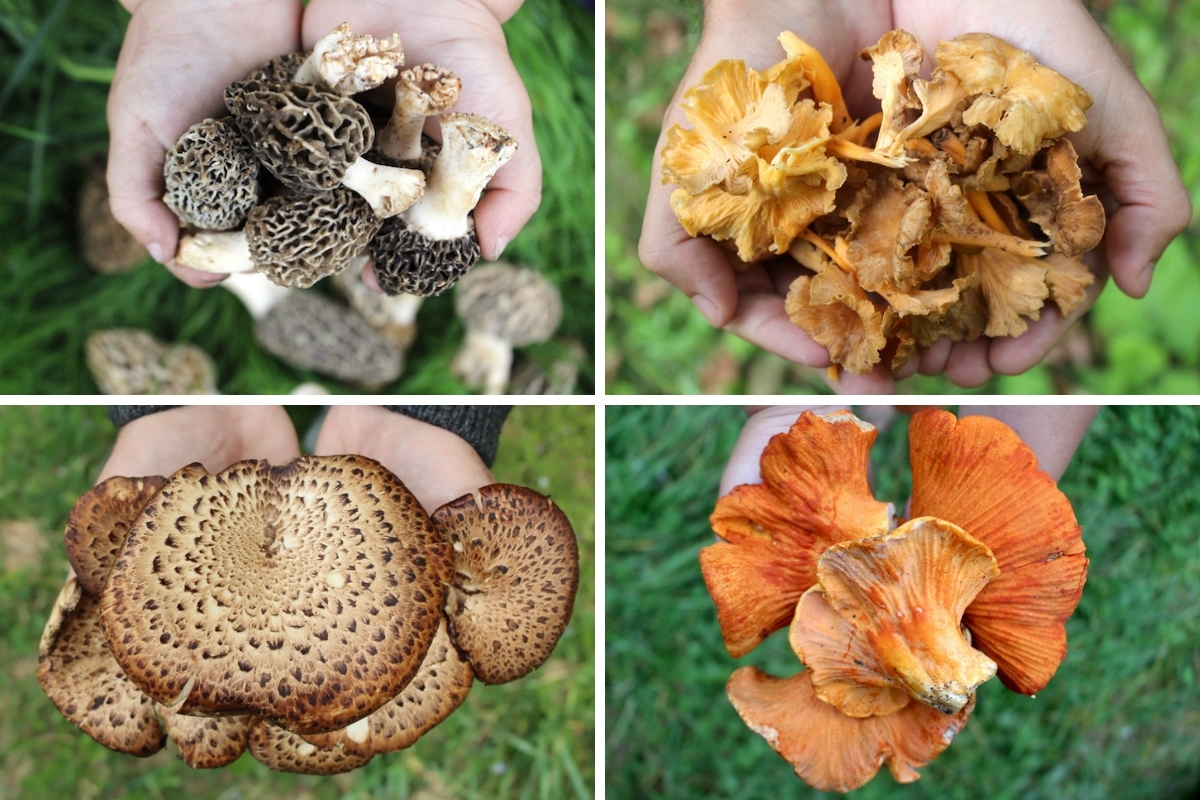
Dehydrating Medicinal Mushrooms
Most medicinal mushrooms are used in teas or double extraction mushroom tinctures, and dehydration is one of the best ways to preserve them. They’re usually quite dry to start with, and many will actually just dry on a rack in the kitchen in 24 hours without extra work (unless you live in a very humid region).
You can also pop them in the dehydrator at about 125 F for up to 4 hours, which speeds up the process. While wetter mushrooms will take as much as 8 hours, most medicinals are already dry and woody.
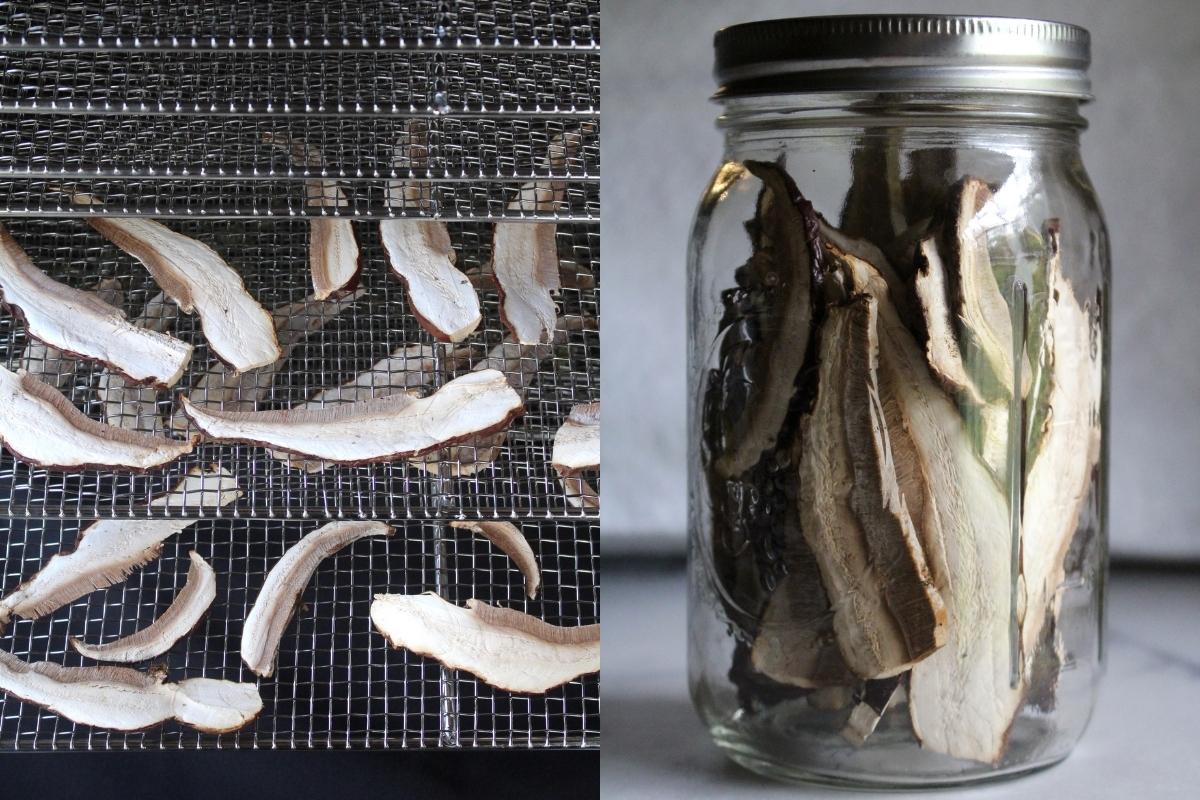
How to Dehydrate Mushrooms
The first step to dehydrating mushrooms is cleaning them thoroughly. Ideally, you’d do it with a brush so you don’t wet the mushrooms, but some species come in just too covered in mud, dirt, or bugs for that to work.
Hollow mushrooms or mushrooms with a lot of crevices should be soaked in a cool saltwater solution for about 30 minutes. This will drive out any bugs. (Morels are especially prone to harboring slugs inside, since they’re hollow, so be sure to soak those.)
Trim off the base of the stem and any discolored parts. Basically prep them as you would if you were planning on cooking them.
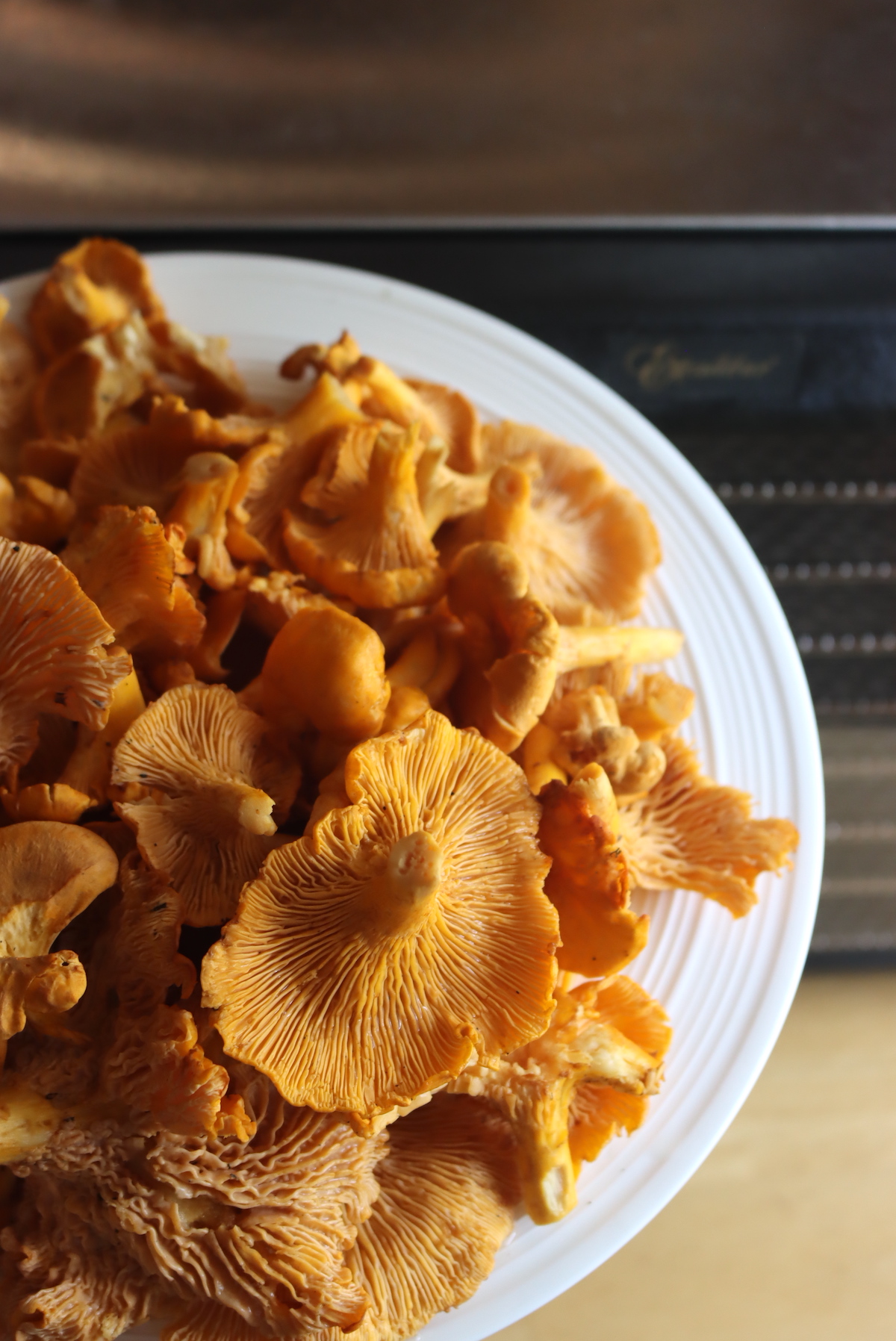
Temperature for Dehydrating Mushrooms
The ideal temperature for dehydrating mushrooms is around 125 degrees F (or 52 C). That’s warm enough to quickly dry them out, preventing mold and spoilage. It’s still cool enough to maintain optimum flavor, and it doesn’t “cook” them during the dehydration process.
If you have a dehydrator, it’s easy enough to set the temperature on most models.
Oven dehydrating is a bit trickier, and most ovens don’t go down below 170 degrees. They’re meant to cook food to a safe internal temperature, not dehydrate delicate things.
Still, you can dehydrate mushrooms in the oven in a pinch. Set the oven as low as it’ll go, and turn on the internal fan (if your oven has one).
It helps to leave the door a bit cracked so moisture can escape during the process. Propping a wooden kitchen spoon in the oven door is a good way to do it. (Be sure you keep an eye on things though, don’t leave them unattended, you’re still cooking here, be careful.)
I use my Excalibur dehydrator, which has simple temperature settings and dehydrates big batches of mushrooms quickly.
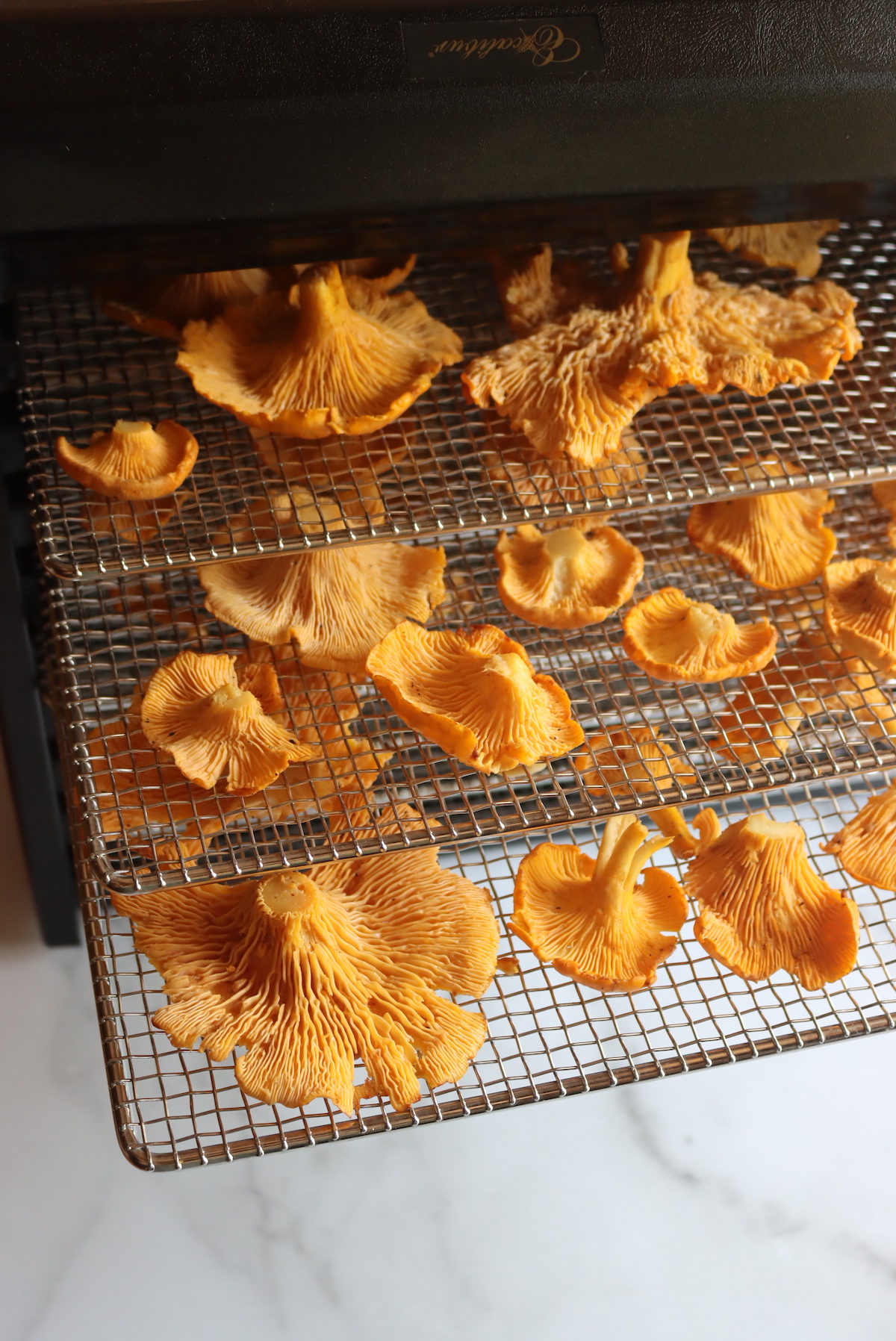
How Long to Dehydrate Mushrooms
The total time for dehydrating mushrooms depends on the type of mushroom and whether you’re dehydrating them in an oven or dehydrator.
In a dehydrator, dryer mushrooms will fully dehydrate in as little as 4 hours. That includes:
- Shiitakes
- Reishi
- Chaga
Moderately dry mushrooms should take around 6 hours. Species like:
- Crimini
- Morels
- Small Chanterelles (yellowfoots)
Wetter mushrooms will take about 8 hours, or possibly a bit more if you live in a humid climate. Things like:
- Large chanterelles
- Portabella Mushrooms
- Oyster Mushrooms
That assumes you’re using a dehydrator and you’ve set it to 125 F (52 C).
If you’re dehydrating in an oven, most ovens don’t go that low, so you’re likely dehydrating at around 170 F (77 C). In that case, you’re looking at more like 1 to 3 hours.
Mushrooms are done dehydrating when they’re fully dry and crispy. They should be relatively brittle and break with minimal pressure.
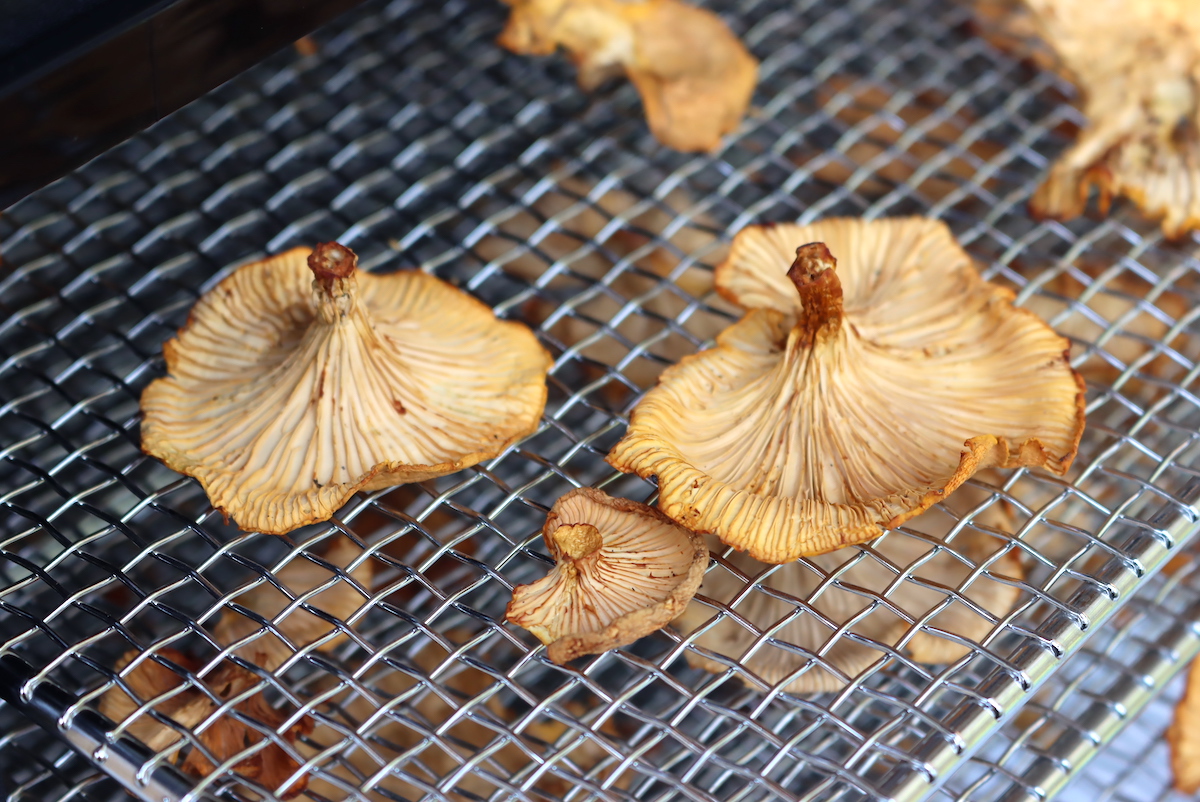
Storing Dehydrated Mushrooms
Once the mushrooms are fully dehydrated, it’s important to store them in a tightly sealed container.
If left open to ambient humidity, mushrooms can re-absorb water (in very humid locations especially). Since wild mushrooms tend to be most prolific in humid climates and during the wettest part of the year, this is especially important right after dehydrating.
I tend to pack mine into mason jars, and that works well enough. You can also vacuum seal them in vacuum sealer bags.
Either way, store them fully sealed. Don’t leave them out on the shelf or stored in something porous (like a paper bag).
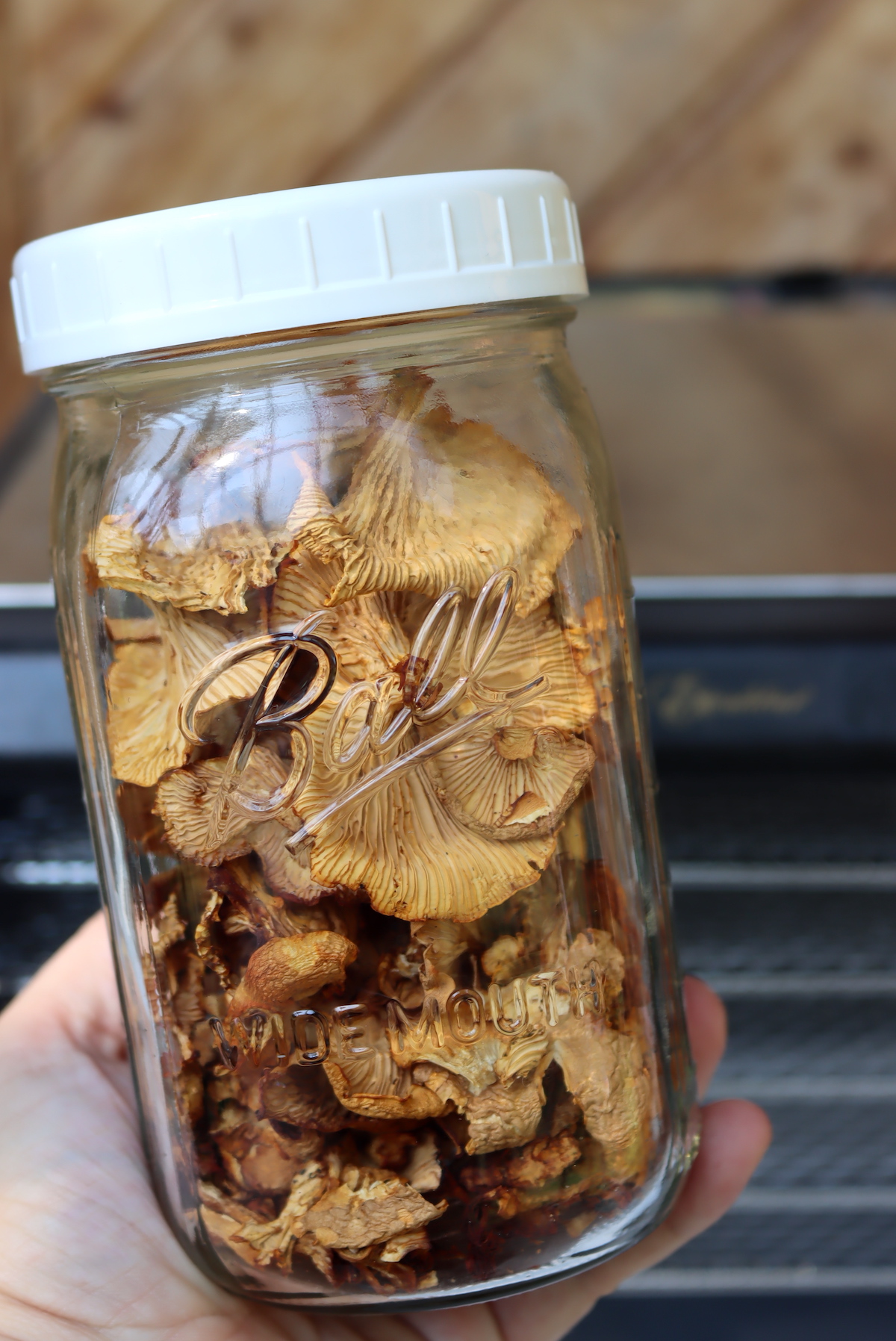
Yield From Dehydrating Mushrooms
The total yield varies dramatically depending on the species. I know, that’s not an answer, but it really does depend.
Volume-wise, shiitakes are about the same size fresh as they are dried, and they lose about 50 to 80% of their initial weight. Other mushrooms shrink more.
A pound of fresh morels yields about an ounce of dried. They’re about 30% the volume, but feather-light and they’d blow away in a breeze.
That’s why they’re so expensive, and you pay a pretty penny when buying dehydrated morels. (To be fair, they’re pretty dear fresh too, and if you can’t find morels in the woods, ordering them online when fresh is tasty…but expensive.)
Using Dehydrated Mushrooms
To rehydrate mushrooms, soak them in cool or room temperature water for 30 minutes to an hour. If you use hot water, the mushrooms will make a “mushroom tea” and lose flavor to the surrounding water.
That’s perfectly fine if you intend to use the soaking water or cook them in water in a soup when fully rehydrated. If you’re just using the mushrooms themselves, like topping pasta, for example, be sure to rehydrate them in cool water.
To heat them afterward, add them to your dish, or sautee them briefly in a bit of butter.
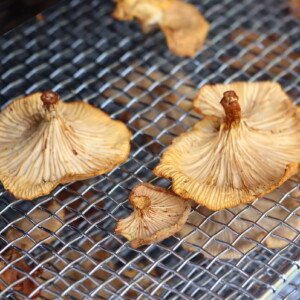
How to Dehydrate Mushrooms
Ingredients
- Mushrooms
Instructions
- Prepare the mushrooms as you would for cooking. Clean them to remove any dirt, and slice them thin to help with dehydration.
- Arrange mushrooms on trays in a dehydrator (or in the oven).
- Dehydrate at 125 F (52 C) for 4 to 8 hours, until mushrooms are fully dry and brittle.
- If dehydrating mushrooms in the oven, set the oven as low as it’ll go. That’s usually around 170 F. Dehydrate until fully dry (usually around 1 to 3 hours).
Notes
Other Ways to Preserve Mushrooms
Looking for other ways to preserve mushrooms? While dehydration is one of the best methods for most mushroom species, it’s not the only way to get the job done.
Cultivated mushrooms can be canned at home, but you’ll need to know how to use a pressure canner. (This method isn’t recommended for wild mushrooms, at least not according to the national center for food preservation in the US.)
Pickling mushrooms is another option, which works well if you hope to use them on a charcuterie plate.
Freeze drying mushrooms is arguably even better than dehydrating, provided you have a home freeze dryer. It maintains a better-finished texture, and they rehydrate better.
The last option is freezing, and most mushrooms freeze best if first sliced and then sauteed in plenty of butter. You then vacuum pack the mushrooms and the flavorful butter into vacuum sealer bags (or Ziploc bags). All the extra butter helps prevent freezer burn, and also locks in flavor.
That method only works well with mushrooms you hope to cook in a bunch of butter anyway at mealtime.
Food Preservation Tutorials
Looking for more food preservation tutorials to stock your pantry?
- Beginners Guide to Water Bath Canning
- Beginners Guide to Pressure Canning
- Beginners Guide to Lacto-fermentation
- Beginners Guide to Cheesemaking
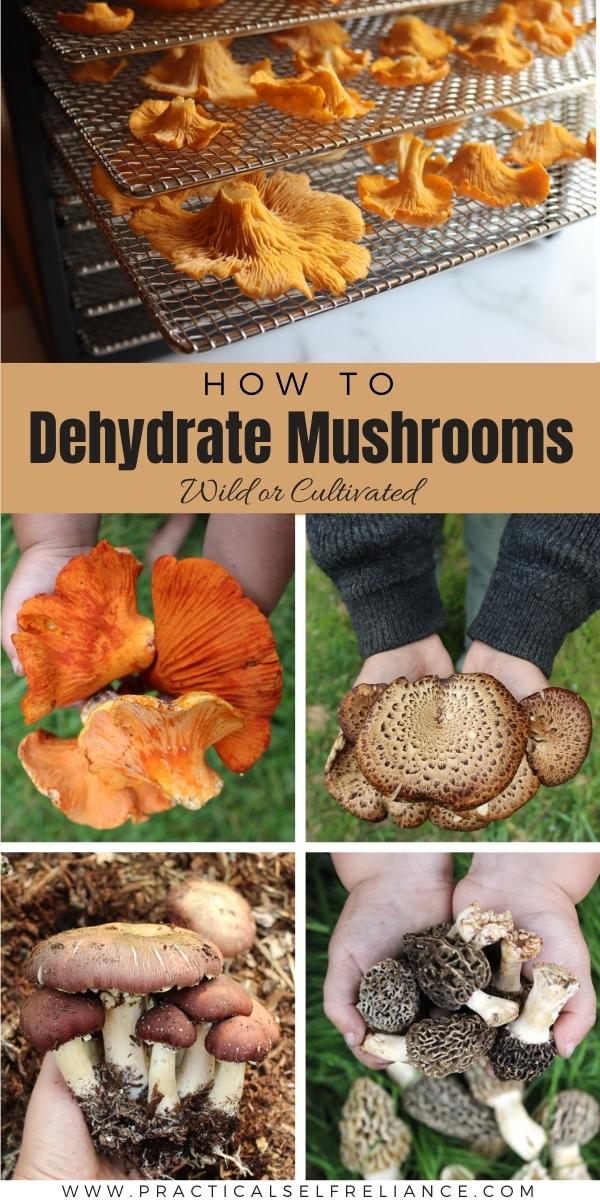
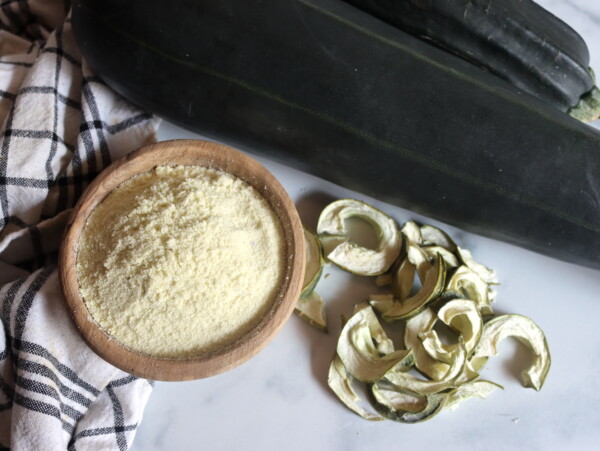
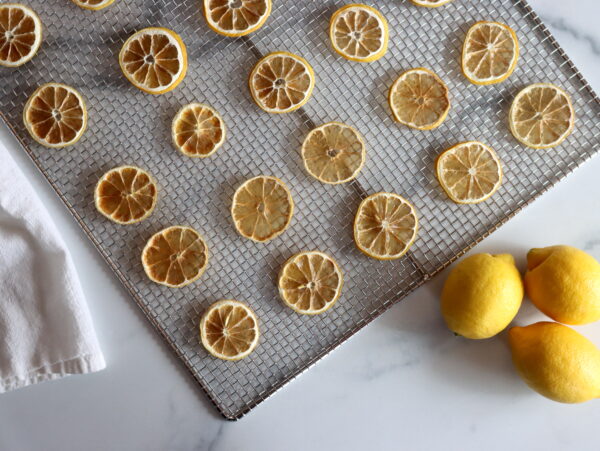
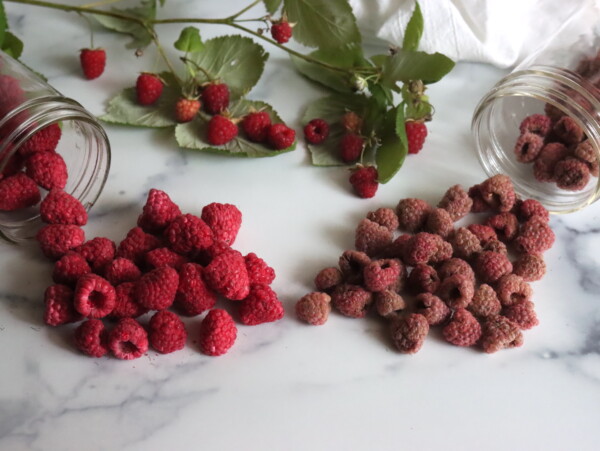
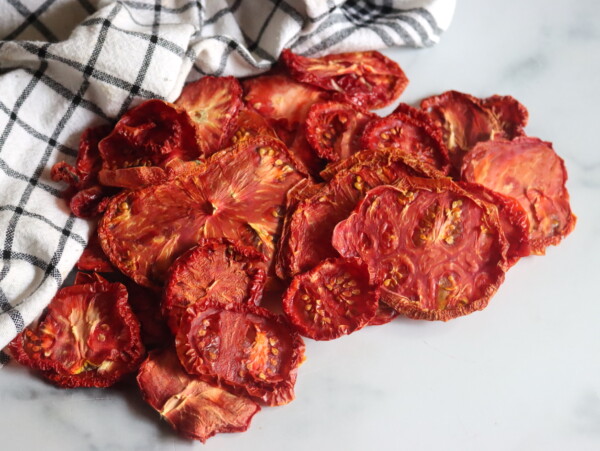
Hi Ashley, What dehydrator do use and are you happy with it? Thanks
I’m using the Excaliber 9 tray stainless steel. It works well, but it’s kinda noisy and it was expensive. These days, I hear the Cosori is the best option for dehydrators, and it’s much less expensive and supposed to be whisper quiet. If I had to buy one again, that’s what I’d choose.
I’m in Windsor County VT and starting to feel bold enough to look at some of the more nutritious/healthful mushrooms I might find in my area (especially those that are easy to properly identify!). Oysters seem to be top of that list…thanks for this terrific resource; do you recommend a particular field guide for mushrooms of Vermont/New England?
This is a great mushroom foraging group. https://www.amazon.com/Mushrooms-Demystified-David-Arora/dp/0898151694?crid=N5EHJRNJWFNN&keywords=all+the+rain+promises+and+more&qid=1638469999&sprefix=all+the+rain,aps,244&sr=8-2&linkCode=sl1&tag=selfrelianc0e-20&linkId=dd7f7f02a78d311460633692640873a5&language=en_US&ref_=as_li_ss_tl
Thank you for replying; I see the book at the link…were you referring me to a group that perhaps meets in my area?
I’m not aware of a group that meets in your area but you could check with your local extension office.
My solar dehydrator is a sheet of clear perspex on a frame, with shade cloth bottom and sides for ventilation and to keep bugs out. Use it for lots of things. Pine mushrooms are seasonally plentiful, I slice them and they dry out in a few days. If I don’t slice them they go mouldy before they dry out. Mushrooms you can dry out completely, as you either reconstitute them or grind them up to use. Other surplus mushrooms I pickle, fantastic. Apples I also dry when we have a good season, when I slice them I throw away (compost) the end bits that are more skin than flesh, as they become to hard for pleasant eating. I don’t dry them out completely, need a bit of moisture for them to be good eating. I store them in an old fridge so that they don’t go mouldy. Apples are also good pickled (even rhubarb is!). I live in an area that’s fairly dry and low humudity. If we get a few days rain while I’m using the drier (not very likely) I’ll probably lose everything, but as I’m not drying produce I’ve paid for or put a lot of work in to it’s no big deal. Things would be more controlled with an electric drier, but I’d have to store it somewhere, my DIY one just sits beside my shed when I’m not using it.
Hi Ashley,
An other way to dehydrate mushroom is using the sun…A mushroom cap, gill exposed to the sun will soak vitamin D which is rare in food and precious for North Country cuisine in our long Winter season…Get more details and look at Paul Stamet experiment with Shiitake. We have our first flush shiitake this year May 15th. Cold weather strain Snow Cap ( from Fields and Forest) on sugar maple logs. Thanks Luc
That’s very interesting information. We will be sure to check it out. Thanks for sharing.